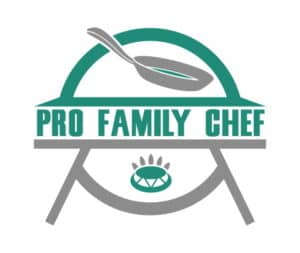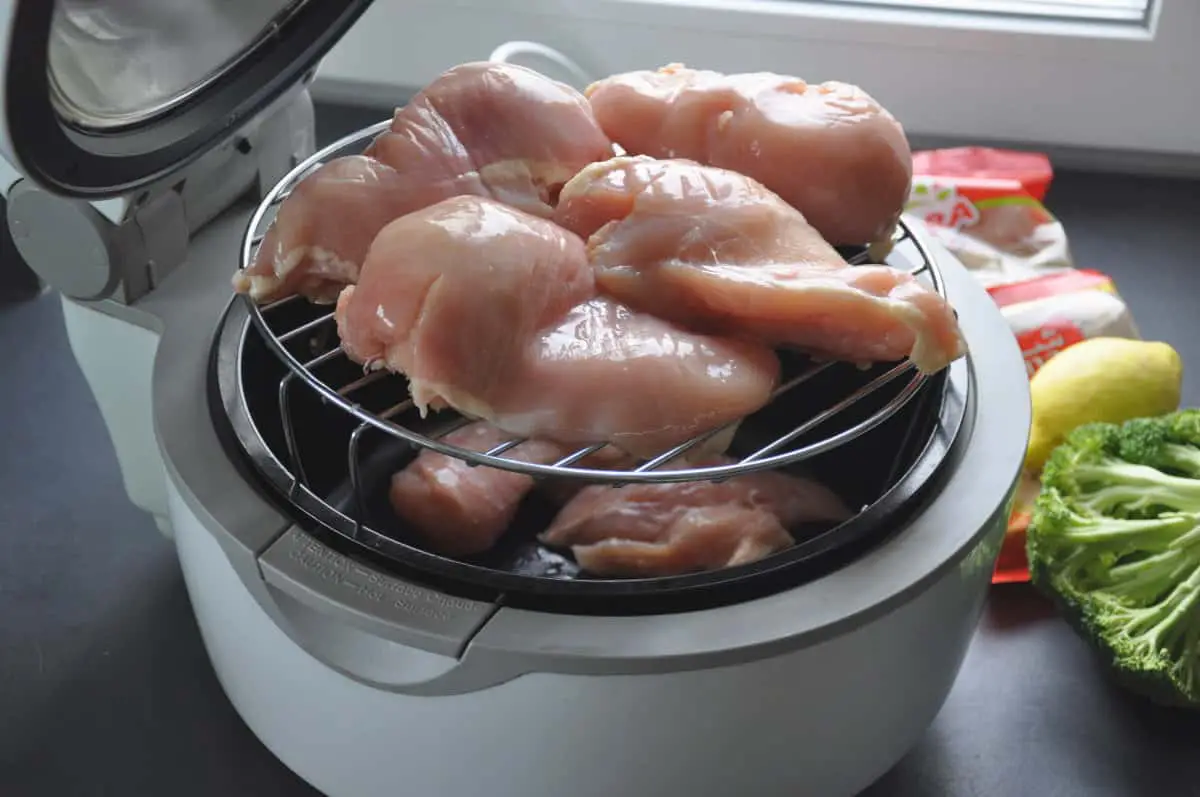You may have noticed that while cooking your chicken, it releases moisture. There are various factors that may contribute to the release of moisture and various methods of minimizing this from occurring.
You may even consider the quality of the chicken and whether or not this is the underlying reason for what seems to be excess water/moisture in the chicken.
So what exactly is this water that comes out of the chicken when cooking it, and how do you avoid or minimize it?
Chicken will release water during the cooking process. This is normal. However, this is usually no more than a tablespoon or three of liquid. If there is excessive moisture/water release, it may be a result of improper cooking techniques, improper thawing, marinating, or not properly drying the chicken before cooking it. Alternatively, it may be a result of the chicken being injected with water by the supermarket selling the chicken.
Why does water come out of chicken when frying or cooking?
When chicken is cooked, fried, roasted, or baked, there is a small amount of liquid that is released during this process. This is usually no more than a few tablespoons, depending on the size and amount of chicken.
Furthermore, when taking your chicken out of the refrigerator, you may want to pat the chicken dry first. There are two reasons for this. Firstly, patting down the chicken will help to ensure a crispier exterior when you fry the chicken. Secondly, it will prevent the release of excess moisture during the cooking process. If the chicken releases excess moisture, it will still steam until it is cooked, but it will not be crispy.
Furthermore, another reason for watery chicken may be improper cooking. Sometimes you may be in a rush, and you end up cooking all your chicken in one go in a small frying pan. Overcrowding the frying pan means that the chicken is not properly making contact with the hot surface of the pan.
This is necessary for the chicken to brown and thereby seal the chicken during the initial part of the cooking process, which will prevent the excessive release of water or moisture.
Some marinades may cause the chicken to retain additional water, which is also released during the cooking process.
And lastly, frozen chicken that has not been properly thawed and is not cooked at the right temperature may retain additional water, which will also be released during the cooking process.
And finally, some slaughter houses will drop the chicken in an ice-cold bath after the slaughter is complete as this causes the chicken to heat up. In order to quickly cool down the chicken for storage, this method is applied. The chicken absorbs a lot of this water. It then releases the water during the cooking process.
How to remove excess water from chicken
There are various techniques that you can apply to help minimize the excess water that is being released by your chicken. These range from what you choose to marinate your chicken in, how you defrost your chicken, the cooking method, or the handling technique.
Pat down raw chicken
As previously mentioned, pat down the chicken before frying it. This will help to reduce the amount of water being released when the chicken is being cooked and will ensure a crispier final product.
Take your time when cooking chicken
When you cook chicken, be sure to take your time to properly cook the chicken. This means not overcrowding the pan in order to save time. Rather cook the chicken breast, chicken thighs, and chicken drumsticks in batches, making sure to properly sear the chicken on high heat.
A properly seared piece of chicken may help to prevent moisture release during cooking.
After the chicken has been seared and there is a coating that will prevent the release of excess water, turn down the heat and allow the chicken to cook slowly until it is done.
Marinade properly
When opting to marinade your chicken, the best way to do this is in a Ziploc bag that properly seals. Alternatively, you may want to go for a dry rub instead. Especially if you know that the chicken has a high water content. Opt for a dry rub with sugar or salt. This is because the dry rub will draw out any excess moisture from the chicken.
Make sure to properly thaw your chicken before cooking
Allow your chicken to thaw in the refrigerator overnight. This may help to reduce the water content in the chicken and prevent the chicken from releasing excess moisture/water during the cooking process.
Draining Chicken After Cooking: Is It Necessary?
While it is not always necessary to drain chicken after cooking, doing so can help prevent your dish from becoming too watery. If you notice a large amount of liquid in the pan, it’s a good idea to remove it before continuing with your recipe. Draining can be done by placing the cooked
chicken on a paper towel or a wire rack, allowing the excess liquid to be absorbed or drip off. Draining chicken after cooking can also help to reduce the overall fat content of the dish, as some of the fat will be released along with the water during cooking.
Chicken Breast Water Content
Chicken breast naturally contains a certain amount of water, which is why some moisture release during cooking is normal. On average, raw chicken breast consists of approximately 65-70% water. When cooked, the water content will decrease, but some moisture will still be present in the cooked meat.
Clear Liquid Coming Out of Chicken: Is It Safe?
When cooking chicken, it’s not uncommon to see clear liquid coming out of it. This liquid is a combination of water and chicken juices, which are released as the meat cooks. As long as the chicken has been cooked to a safe internal temperature of 165°F (74°C), the clear liquid is not a cause for concern.
How to Drain Chicken: Tips and Techniques
If you find that you need to drain your chicken after cooking, there are several methods you can use to achieve this:
- Using a slotted spoon or tongs: Gently lift the cooked chicken pieces out of the pan, allowing any excess liquid to drain off before transferring them to a serving platter or another container.
- Paper towels: Place the cooked chicken on a plate lined with paper towels to absorb any excess liquid. This method is particularly useful if the chicken is fried, as the paper towels will also help to remove any excess oil.
- Wire rack: Place a wire rack over a baking sheet or a plate, and transfer the cooked chicken onto the rack. The excess liquid will drip onto the sheet or plate, leaving the chicken free of extra moisture.
- Using a colander or sieve: For smaller pieces of chicken or shredded chicken, place the cooked meat in a colander or sieve over a bowl, allowing the excess liquid to drain away.
By employing these techniques, you can successfully drain chicken after cooking and ensure that your dish is not overly watery.
Why is water added to chicken?
Some manufacturers inject their chicken with a liquid solution. This helps to plump up the chicken and make it appear more appealing to customers. The solution consists of salt, water, flavoring, and sodium or potassium phosphate. This process is known as plumping. And, it’s intention is to make the chicken appear more appetizing and fuller.
This liquid is absorbed by the chicken, and the mixture allows the chicken to retain the water. This process is known as brining. In some instances, the chicken absorbs an excess amount of liquid, causing the chicken to taste water-logged.
Is plumping chicken unhealthy?
Plumped chicken may contain as much as 2000 mg and 5000 mg of sodium per single serving.
This is more than the daily recommended amount as set out by the United States Department of Agriculture (USDA) and the Food and Drug Administration (FDA). It is approximately 25% more than the daily recommended amount.
Is organic chicken plumped?
Yes. According to the Food and Drug Administration (FDA) and the United States Department of Agriculture(USDA), both water and salt are considered to be natural. This now opens the door for organic chicken to be pumped as well.
A key point to keep in mind, is that standard chicken breast is usually only five to six ounces in weight (140-170 grams). If the chicken breast is larger than that, there is a high likelihood that the chicken has been injected with a solution.
In Conclusion
Chicken will naturally release some moisture during the cooking process. However, if you find that there is an excessive amount of water, it may be due to improper cooking techniques, inadequate thawing, marinating, or not drying the chicken before cooking. It could also be a result of the chicken being injected with a solution to make it appear more plump.
To minimize excess moisture, make sure to properly thaw, pat dry, and cook your chicken using appropriate techniques. Keep in mind that draining chicken after cooking may be necessary in some cases to prevent a watery final dish.
With these tips and techniques, you can now confidently cook chicken without worrying about excess moisture and enjoy perfectly cooked, flavorful dishes every time.

